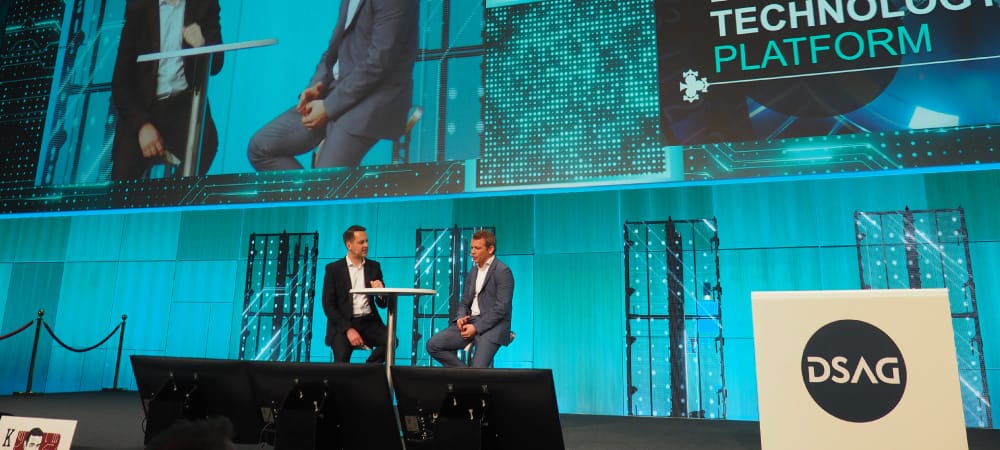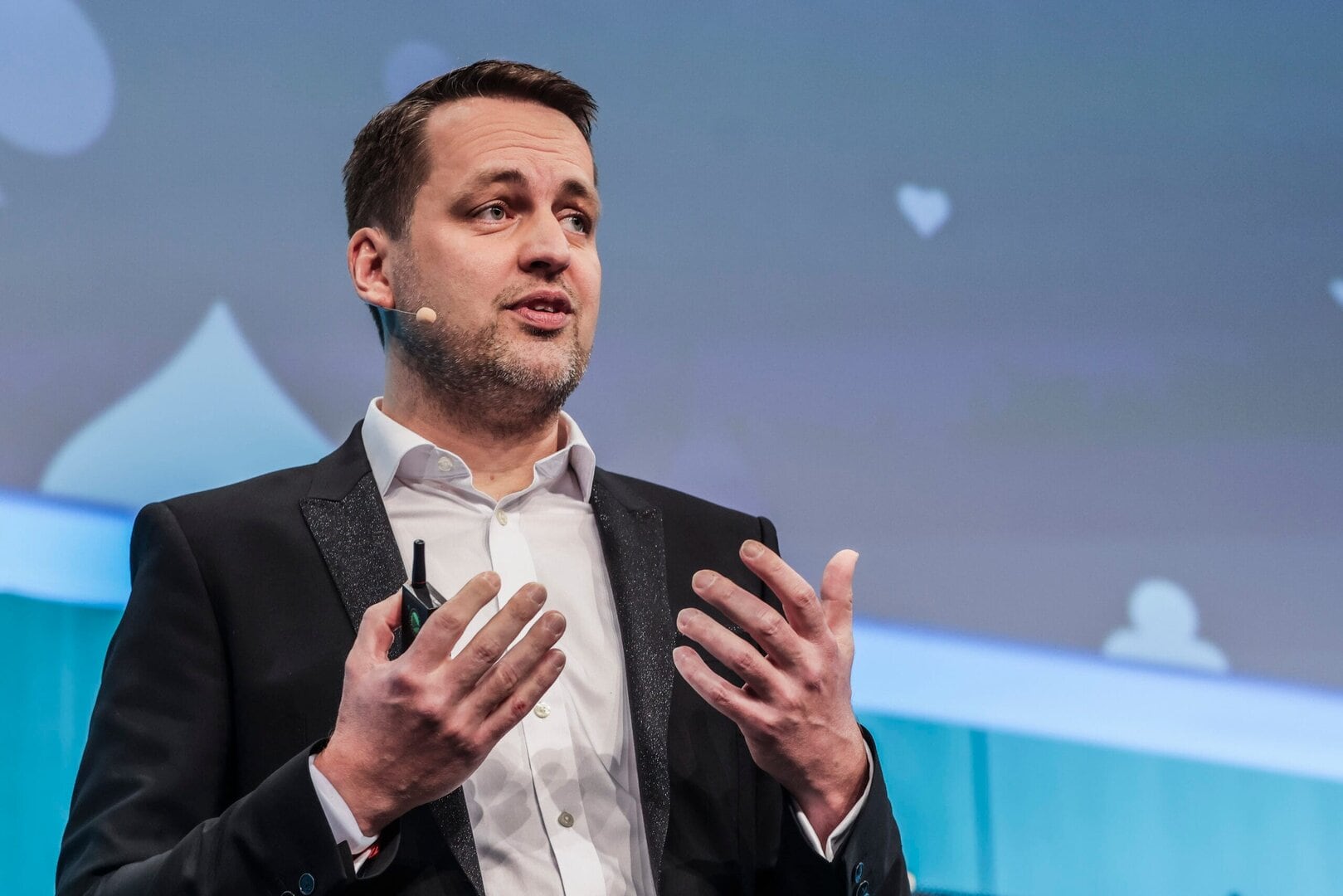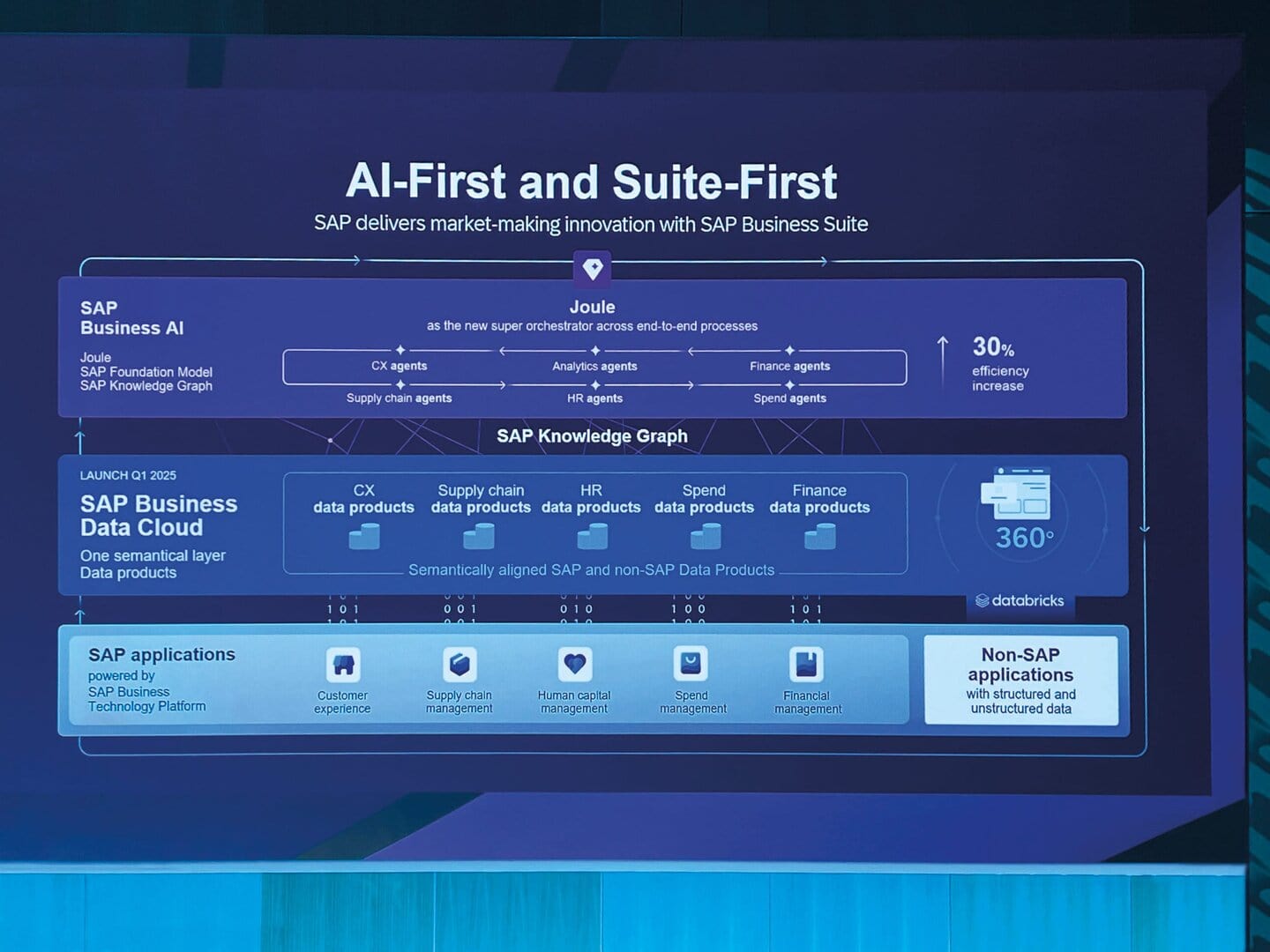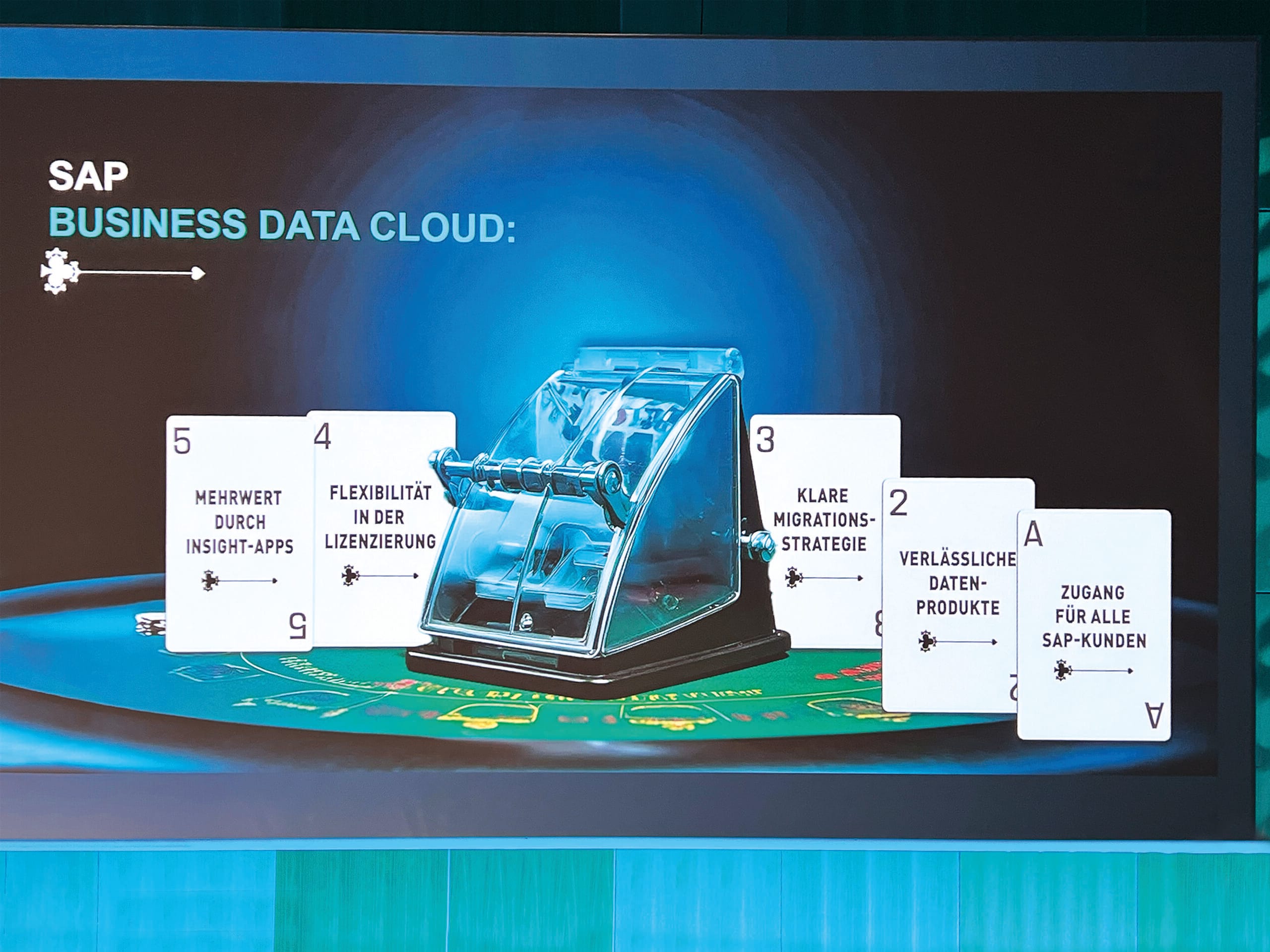DSAG Technology Days 2025: The SAP exit strategy


The Technology Days 2025 of the German-speaking SAP User Group (DSAG) were held under the motto: Call, Raise or Fold? Borrowed from the game of poker, Call stands for possible solutions for companies that want to use their SAP systems and only invest as much as is necessary. Raise refers to well thought-out, sustainable and strategic decisions, particularly with regard to the new SAP target strategy and the implementation of new (cloud) technologies. And Fold stands for the option of leaving after an intensive review and looking for an alternative - in other words, an SAP exit strategy.
Never before has the DSAG user association addressed a possible exit scenario as clearly as at the Technology Days 2025 in Wiesbaden. Well over 3,000 congress participants came to find out about the future viability and sustainability of SAP. In purely formal and statistical terms, many existing SAP customers have an S/4 contract in the drawer or have partially customized Hana and S/4. However, very few are convinced by the new ERP world. SAP has also recognized this dilemma and added a "new" Business Suite to the ten-year-old S/4 at the beginning of this year. With programs such as Customer Evolution and SAP for Me, the global ERP market leader is trying to save its supremacy. You can find out more about S/4 conversion in times of "End of Mainstream Maintenance" at the SAP Competence Center Summit on May 21 and 22 in Salzburg.
Big move? Partner D atabricks
The name "Business Suite" is intended to reactivate a successful product label from the on-prem era. The "new" Business Suite is to be transferred to the cloud in its entirety. The Business Technology Platform (SAP BTP) will continue to form the central technical foundation of this new Business Suite and will play a decisive role, for example in the integration of the various SAP solutions. Finally, the SAP Business Data Cloud (BDC) is intended to enable cross-system harmonization and use of SAP data.
"But we also see that the competition is not sleeping, if we take the Business Data Cloud," explains Sebastian Westphal, DSAG Board Member for Technology. "And when I look at what the company I work for has already built up in terms of data-centric architectures, I think that the path SAP is now taking may not be the last straw. Because with a classic architecture and solution such as a bridge, you will of course not be able to keep up with the high-performance and subsidized solutions of the hyperscalers in the long term. And that's why I don't really think this big move to bring in Databricks, a partner that actually comes from the open source environment and can be found in all hyperscalers, is the last word."

when everything comes from a single source with SAP."
Sebastian Westphal, Chief Technology Officer, DSAG
From DSAG's perspective, the Business Data Cloud could become SAP's biggest change in strategy since S/4. The target image envisaged by SAP is intended to harmonize today's fragmented data structures. This is an enormous challenge: not only does SAP want to assume greater operational responsibility for the integration and provision of standardized data models, but the BDC is about nothing less than the transformation of existing landscapes into a future-proof, cloud-centric architecture for on-prem and public cloud customers alike. These future data products must be delivered in a timely, reliable and usable manner, both technically and commercially. Cross-system data harmonization is essential to enable a data-as-a-product philosophy. However, many user companies have already implemented modern data lake (house) architectures. The success of the BDC will therefore also depend on how well it integrates into these architectures and provides SAP data without technical and commercial restrictions.
Data management for the future
At the DSAG Technology Days 2025 in Wiesbaden, Sebastian Westphal also went into technical detail in the E3 discussion: "If you work with Spark, you are more likely to use Python than traditional programming languages. That's the right move. Whether it comes in time, whether it is easy enough to adapt, that is the critical question. And if it doesn't succeed, then customers will continue to switch to other architectures, which will continue to expand. And then SAP will lead a niche existence in this area. This is a very adequate niche existence with a clear focus on SAP-only architectures. But what we actually need - namely higher-level data management with a view to what will come in the next few years - will be the end of the line at some point. In this respect, I think it is essential from a company perspective that SAP takes this path. However, we also heard at the press conference today that there are still a few things that are unclear, a few things that are still open and that is why the final decision has not yet been made."
An SAP exit strategy is therefore a white elephant in the room. It is no secret that the SAP community is beginning to reorient itself - which should not be a problem given the current supply situation: Just one week after the SAP presentation of BDC and the deepening partnership together with Databricks, the new SAP partner announced a largely similar deepening partnership with Confluent. This means that existing SAP customers are in no way tied to SAP when it comes to using Databricks services, which, as DSAG Chief Technology Officer Sebastian Westphal emphasized in the E3 interview, are available with all hyperscalers.
Confluent, a pioneer in data streaming, and Databricks, the data and AI company, announced a major expansion of their partnership in the first quarter. By combining Confluent's complete data streaming platform with Databricks' data intelligence platform, organizations can leverage real-time data to make AI-driven decisions. The new integrations between Confluent's Tableflow and Databricks Unity Catalog will ensure data governance and control across operational and analytical systems. Delta Lake is a format-independent storage tier developed by Databricks that was originally designed for streaming use cases with fast write operations. It is now the most widely used lakehouse format: with daily data processing of over 10 exabytes, it has proven itself on a large scale. By combining Tableflow and Delta Lake, operational data is now immediately available in the extensive Delta Lake ecosystem. Confluent and Databricks customers can apply any engine or AI tool such as Apache Spark, Trino, Polars, DuckDB and Daft to their data in Unity Catalog.
In the end, the customer decides
Sebastian Westphal adds: "The customers will decide in the end and I think we will be much further ahead by the same time next year. And as far as the Business Suite is concerned, I don't think it's all that new. I think that if you let the announcement dust settle, you will see that this is the path that SAP has already taken today and yesterday. In the end, it's all about: what is the added value of a manufacturer if its solutions work together in the best possible way? Harmonized in operation, harmonized in integration with consistent identity management and security standards."

Seamless integration required
With the business strategy announced at the Business Unleashed event in February, SAP is focusing on the core elements of processes, data and AI with the aim of providing efficient process chains. In addition, more and more end-to-end processes are also being offered in the cloud by combining the various technology stacks and cloud services on the basis of BTP. "Even though SAP is undoubtedly working on harmonizing and integrating its solution portfolio, a consistent architecture is the key to success for the envisaged Business Suite. To achieve this, SAP must continue to harmonize the product landscape and consistently implement uniform standards, e.g. for data models and identity and security services. By definition, a suite requires the seamless integration of the SAP solutions it contains, uniform operating models and clear migration and implementation strategies along the way," says DSAG Chief Technology Officer Sebastian Westphal.
In addition, the SAP community expects a modular business suite that can be flexibly adapted to company requirements and integrated into overarching company architectures without great effort or cost. "And, of course, the commercial advantage of a suite must also be clearly evident when everything comes from a single source with SAP. Both technically and commercially - in other words, transparent cost structures and contract models," says Westphal. As it is unlikely that a business suite will be able to cover all of today's use cases, long-term support for partner solutions is required as part of the SAP Clean Core strategy. The frequently used add-ons in particular should remain usable on the basis of stable, long-term certification conditions - which is in the common interest of partners, user companies and SAP itself in light of SAP's S/4 maintenance commitment until 2040. Will this calculation work out or, as mentioned at the beginning, will it be a game of poker with a fold? This stands for the option of passing after intensive examination and looking for an alternative - thus an SAP exit strategy.

and establishes a seamless connection to external data.
Hybrid scenarios on the rise
"I think we are already seeing a move away from operating an SAP system in your own data center," analyzes Sebastian Westphal in the E3 interview. "On the other hand, we see scenarios where critical production processes are installed on site and not in the public cloud, which is hundreds of kilometers away in case of doubt. We have seen the discussion at Adobe Document Service, where it was established that High-performance printing processes cannot take latency into account and wait, but the moment it is labeled in production, it has to work. So yes, I am firmly convinced that we will continue to see hybrid scenarios.
Hybrid landscapes will continue to exist. Everything in a public cloud? I don't expect that anyway. But I do believe that we will only see managed infrastructures in the next few years. But I think we will stick with scalable solutions purely from a cost perspective." If these prerequisites are created and implemented with clear business benefits, Business Suite, Business Technology Platform and the Business Data Cloud will not become a bet with an unknown outcome for the user companies, but in the best case a "royal flush" or even a successful SAP exit.






2 comments
B.Rater
Der Erfolgsfaktor wird ein funktionierendes Partner-Ökosystem sein, das die Worthülsen zum Leben bringt. Partner, die nicht durch ständiges Anpassen der SAP Strategie Unsummen für Fortbildung ausgeben und in einem schwierigen Marktumfeld auch noch Geld verdienen können.
Hoffen wir, dass auf den Höhenflug der SAP Aktie nicht irgendwann der tiefe Fall kommt.
Peter M. Färbinger, E3-Magazin
Die SAP-Partner-Community war von Bginn an eine erfolgsentscheidende Komponente und SAP-Mitgründer Dietmar Hopp war und ist immer ein Team-Player! Leider vergessen die aktuell Verantwortlichen manachmal diese erstklassige SAP-Vergangenheit.